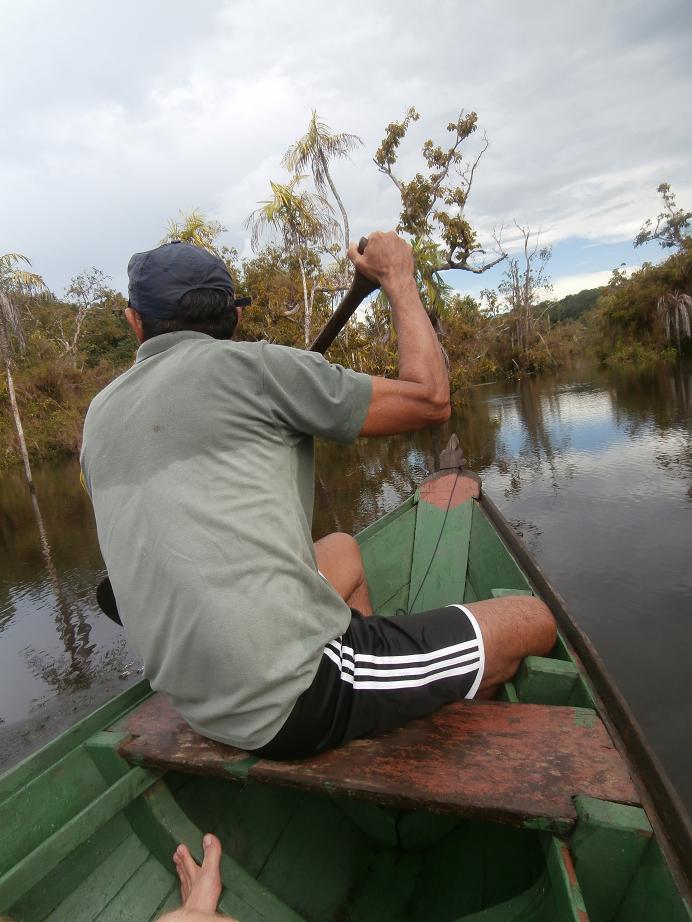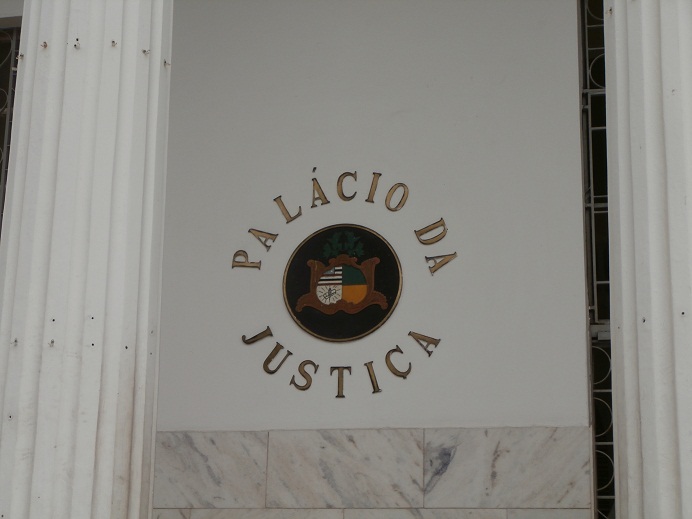Two weeks ago I started a last trip to my final destination in Brazil,
taking a boat all the way on the amazon river from Belem to Manaus.
First I went by boat from Bélém to Santarem. This trip takes 2,5 days and shows you the beauty of the amazon river. Because we are in full rainseason the river rised up to 7 meters compared to dryseason. So the river is so wide sometimes you almost can't see the other side of the river. Parts of the vegetation and trees are underneath the water level. We pass by lot's of pile houses (paalwoning, NL), many less fortunate people escaped the city and build houses at the riversides. Knowing that at dry season there high above the river and at the end of rainseason some houses are flooded, no wonder hammocks are the most used type of beds in the amazon region, it also protects you from insects and other animals joining you while in your sleep.
During the boattrip sometimes people or childern come and attache their boat to ours in the middle of the river to clime on board and sell meals and fruit from the forest. Somethimes we where lucky to see dolphins swimming near the boat.
The boat I took in Manaus is quite big, with some private rooms, most of the people sleep in their hammack on deck. The food was very expensive, the staff most unfriendly and the sanitary facilities precare. But I met lot's of interesting people (Brazilian, French, Spanish, German, Colombian, U.S.A., Poland, ...), talking about live and hot social and political issues.
If you really want to get to know a place you have to take your time. This boattrip is the perfect occasion. You can't visit the amazon in 2 days.
Rubber, the amazonian gold
In Santarem I took a bus to Alter do Chão. This is a small tourist place at the Rio do Tapajós. Some Brazilians told me before that the 'Praia (beach) do Alter do Chão' is the most beautiful of Brazil. The only detail I forgot was: 'rainseason', so all the beaches and the beginning of the forests are 7 meters deep under the water now. The advantage is that there are less tourists at the moment and you can take a boat deeper into the forest to watch birds. Something that is hard to spot in dryseason.
From Alter do Chão together with Ian (U.S.A.) and Magda (Poland) we organised a three day trip in the region. Moises our guide took us first to 'Fordlandia'.
5 hours with a fast boat up to the Rio do Tapajós.
Long time ago some tire compagnies monopolised the production of tires forcing car compagnies to pay high prices. Henry Ford, wanted to avoid subordinating and started his own rubber/ tire production lines in Asia and Brazil. At the Tapajó river he bought land and build a new town, Fordlandia. He installs rubbertree (Seringeiro) plantations and a factury for making the natural rubber (borracha) into cartires.
The whole town was build in American (U.S.A.) style and Ford even introduced the Baptist church.
The climat of the area of Fordlandia was perfect for a specific disease that affected the rubber trees, so Fordlandia never became a great succes and Ford had to close the factury.
The exploration of the amazon region would never have been so strong without the possesion of natural rubber. Manaus for example was founded in 1850. The international industry developing the first cars needed huge amounts of rubber for manufacturing wheels. So the economy in the amazon region that was one of the main providers of natural rubber was living his golden era. Around 1920 a chemical proces was developed to make synthetic rubber, this made the market for natural rubber collapse.
Manaus in particular was a city of abundant wealth based on rubber production, but was later left behind by the rich rubber barons as a poor city. In 1967 the Brazilian governement made Manaus a TFA (= tax free area), to avoid further impoverishment. Now Manaus is a city important in Brazil for his production of cars and electronics. Because it is geographically isolated all these products are transported to the rest of Brazil and the world or by plane or by boat via Bélém.
After visiting Fordlandia we went to the Jamaraquá comunity. One of the several comunities of indigenous people living along the Tapajós river. From there we took a 5 hours guided walk into the Floresta National do Tapajós. Most of the forest next to the rivers have already been cut so we call this secondary forest (= capoeira, Portuguees). After walking 1,5 hour we arrive in the primary forest and meet with the big giants. The biggest tree in the area is called 'the mother tree' and is more than 850 years old. In this area grows also rubbertrees, and native cacaotrees. The rubberworkers who worked with the rubber trees introduced mangotrees (mangueiras) and cacao do Bahia. Taking a cano trough the floating forest we saw lot's of birds like the woodpecker (Pica-pau) and parrots (Arara).
Taking the boat on the Tapajós river we meet a big floating boa and we see native rice growing on the sandbanks of the river.
Later when I arrived in manaus I did an other forest trip with Ian and Magda, Antonio Jungle-tours. In a river area 5 hours traveling from Manaus (bus and boat). These tours are quite expensive and very touristic, but at least it gives you an idea of the beauty and richness of the amazon forest. There are a lot of Amazon tour operators in Manaus.
This trip we went a bit deeper in the forest, learned a lot about all the interesting medical and esthetical uses of the plants and trees in the forest and we spotted some animals.
For seeing more wildlife you kneed:
- the eyes of a native person
- spending more days walking deeper into the forest
- visite the amazon forest in dry season
We also visited a local maniok plantation, a family burning down a part of the forest growing maniok and processing it into 'farofa', some kind of backed maniokflour that most of Brazilians eat with their 'arroz e feijão' (= rice and beans).
At this moment I'm spending my last days in Brazil. Wednesday I will leave Brazil and start conquering Peru. Starting with one month of volunteer work for 'Oye Lena' near Cusco.
So this is my last report about Brasil.
Somewhere I would like to go home for a week and then return tu Latin-America.
The fact that I will be able to settle for one month in Cusco is assuring me.
Photo gallery
The type of boats taking you from one city to an other on the amazon river.
The amazon river in rainseason. The biggest tiver in the world.
Everything produced in the amazon region is transported by boat or plane.
Also wood...
A house next to the river.
The beach at Alter do Chão.
The same beach.
Our expedition crew: me, Moises, Magda and Ian.
Fordlandia
The former hospital of Fordlandia
The waiting room
The school (1931) is still in use
The factory
Rubbertrees (Seringueiros)
The (more than 850 years old) mothertree in the primary forest
Cacao do Bahia, imported by the rubber workers.
Pau Brasil, the tree that gave Brazil it's name.
A panoramic view from the primary forest.
Our forest camp.
Native rice
Floating Boa
A maniok plantation
How maniok becomes Farofa
A tarantula almost as big as my hand.
First day
Second day


























































